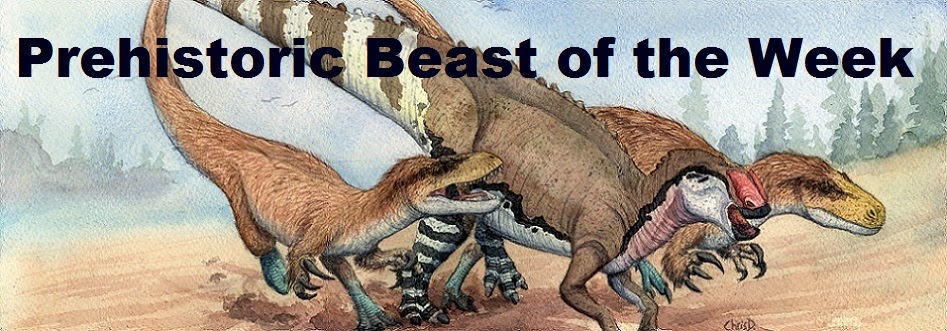This week we will be checking out a dinosaur they helps us better understand dinosaur eggs, Heyuannia huangi!
Heyuannia was a theropod dinosaur that lived in what is now China and Mongolia during the latest Cretaceous period, between 70 and 66 million years ago. From beak to tail it measured almost 5 feet long (1.5meters) and was likely an omnivore when alive. It's name translates to "from Heyuan" in reference to the region of China where its bones were first found.
.jpg) |
| Watercolor life reconstruction of Heyuannia by Christopher DiPiazza. |
Heyuannia was a member of the oviraptorosaur group of dinosaurs, known for being bird-shaped with long necks and short boxy skulls with powerful beaks. Many of them also sported tall bony crests on their heads, but sadly the whole skull of Heyuannia has not been found so we don't know that part of it's anatomy for sure. Like its relatives, Heyuannia may have been an omnivore, using its short, but powerful beak to process seeds, fruits, and other tough plant material, but would have also been equally efficient at eating small animals, including hard-shelled invertebrates.
 |
| Heyuannia skeleton on display at the Heyuan City Museum in China. |
Heyuannia had proportionally short arms and fingers compared to many oviraptororsaurs. Each finger was armed with a curved claw. We don't know why its arms and fingers were so short. It may have been exhibiting a different feeding style that utilized its head and neck more, but it is almost impossible to predict exactly what that would have been. Like all Oviraptorosaurs, it is almost certain Heyuannia had feathers in life.
 |
| Photograph of a fossilized Heyuannia nest from the paper by Wiemann et. al. referenced below. Note how the eggs are in a ring pattern and arranged in pairs. |
Heyuannia is also known from many eggs and embryos which were found in the same place as many of the adult skeletons. The nests of eggs are arranged in a ring pattern and don't appear to have been buried in life. This implies that the parent would have guarded the nest with its body, likely with its feathered arms spread over the ring of eggs and their body in the middle of the ring. (We have actual fossils of close relatives that died doing exactly this.) In addition the eggs are arranged in pairs, which implies they were laid two at a time. This is notable since modern birds do not lay eggs in pairs because they only have one functioning oviduct, an adaptation to lighten their bodies for flight. Oviraptorosaurs, which did not fly, likely had both oviducts in use due to the way we find their eggs.
The most exciting thing about Heyuannia's eggs is the fact that scientists were able to examine the shells closely enough to identify the chemical makeup of some of them, specifically the part that reflects what color the shells would have been. According to what they found, the eggs of Heyuannia would have been blue-green in color!
References
Lü, J (2002). "A new oviraptorosaurid (Theropoda: Oviraptorosauria) from the Late Cretaceous of southern China". Journal of Vertebrate Paleontology. 22 (4): 871–875.
Lü, J. (2005). Oviraptorid dinosaurs from Southern China. Beijing: Geological Publishing House. ISBN 7-116-04368-3. 200 pages + 8 plates. (In Chinese: pp 1-83, including 36 figures & 3 tables. In English: pp 85-200, including 5 geological figures.)
Wiemann, J.; Yang, T.-R.; Sander, P.N.; Schneider, M.; Engeser, M.; Kath-Schorr, S.; Müller, C.E.; Sander, P.M. (2017). "Dinosaur origin of egg color: oviraptors laid blue-green eggs". PeerJ. 5: e3706.

.jpg)


.jpg)



.jpg)


.jpg)

.jpg)



